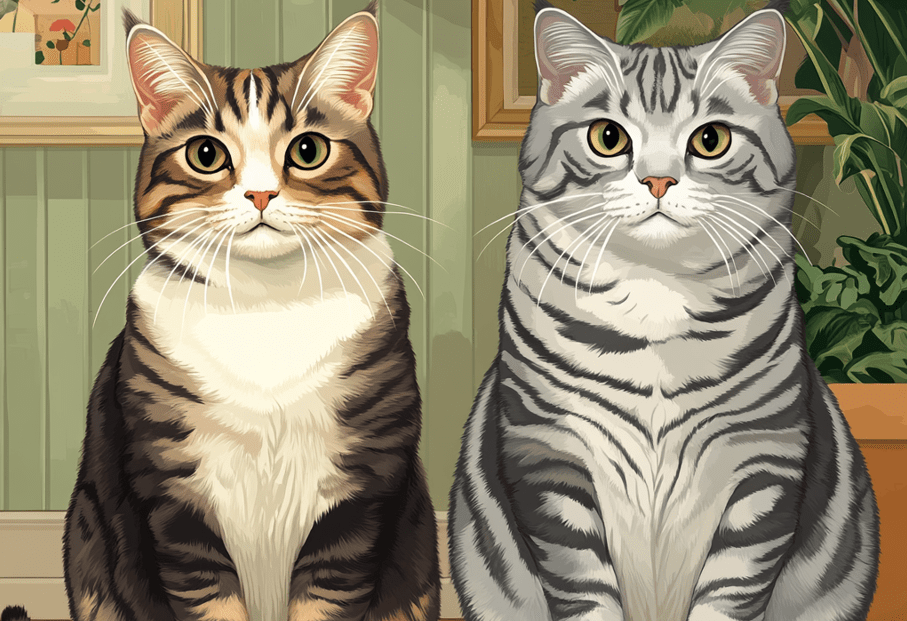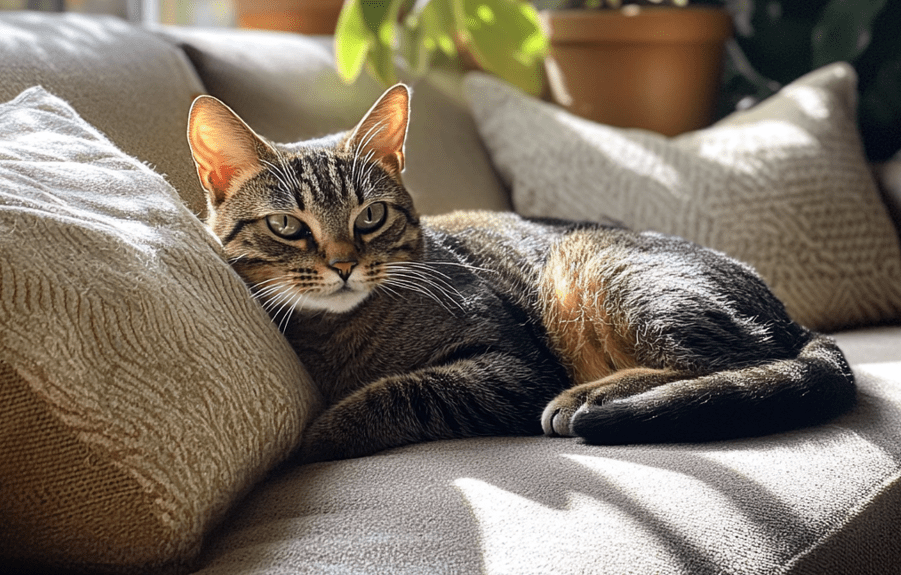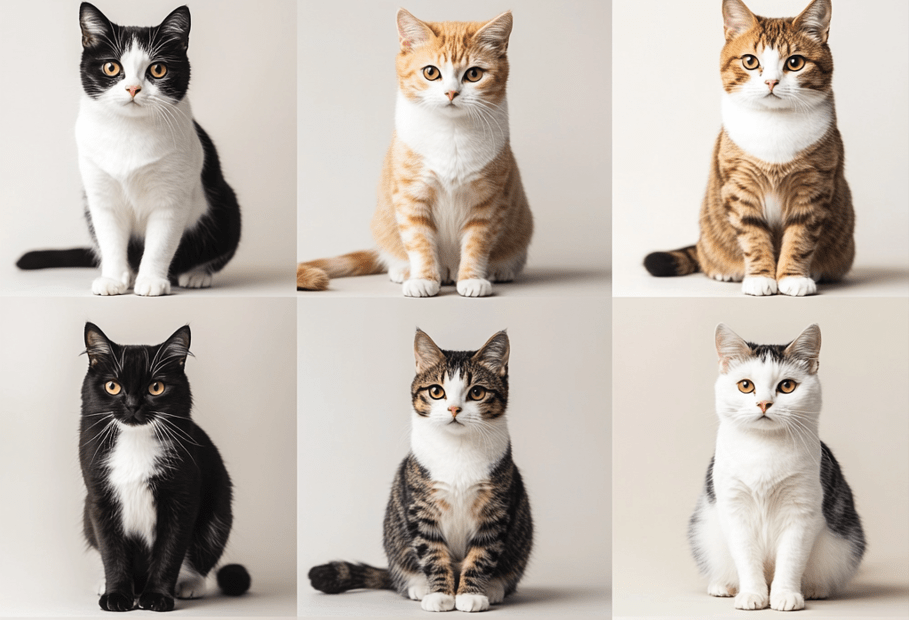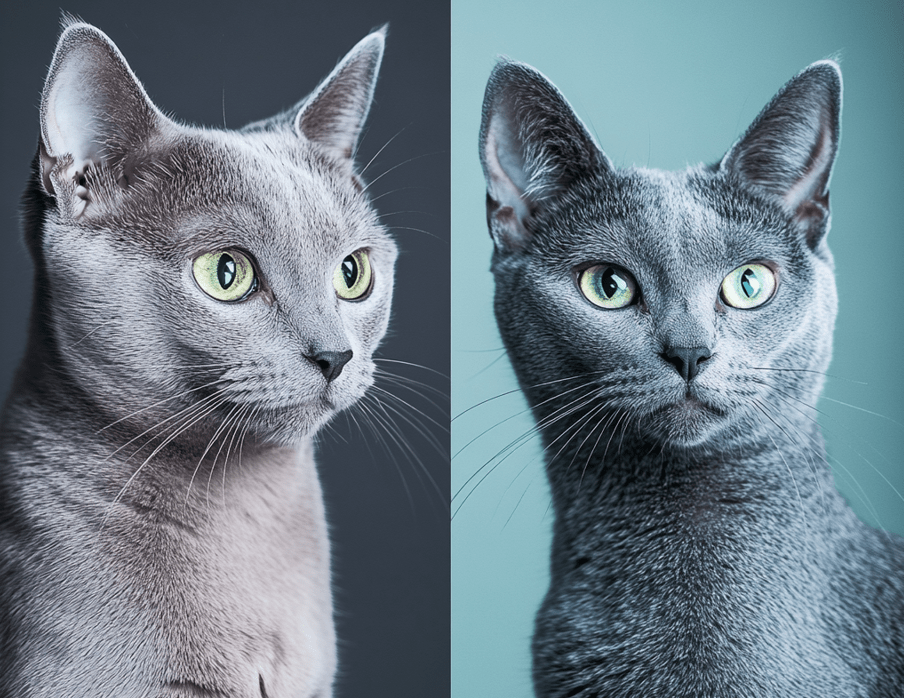
Domestic Shorthair cats show their independent ways of being while also demonstrating their affection toward people. They become the top choice for cat enthusiasts because of how short their fur is. However, one common question that often arises is: “Do Domestic Shorthair cats shed a lot?” People who experience pet dander issues or hate pet hair require essential information about how much Domestic Shorthair cats shed.
This article studies how Domestic Shorthairs shed so you can maintain your home cleanliness and handle pet hair properly. This guide provides complete knowledge to help new or experienced cat owners handle shedding effectively while maintaining hygiene support.
Key Topics We Will Discuss:
- The shedding patterns of Domestic Shorthair cats
- Several conditions affect shedding patterns in Domestic Shorthair types of cats
- Seasonal shedding in DSH cats
- What amount of fur loss is standard for cats.
- Grooming techniques to reduce shedding
- Learn efficient ways to control cat hair buildup throughout your space.
- Special tips for owners with allergies
Understanding Domestic Shorthair Cats and Their Coats
Domestic Shorthair cats are not a separate breed but describe a group of mixed-breed cats that usually have a thick short coat. All Domestic Shorthair cats possess a short and manageable coat even though they present in multiple skin tones. Compared to long-haired breeds the Domestic Shorthair sheds much less hair. People frequently believe Domestic Shorthair cats don’t shed but this idea is not correct.
Do Domestic Shorthair Cats Shed a Lot?
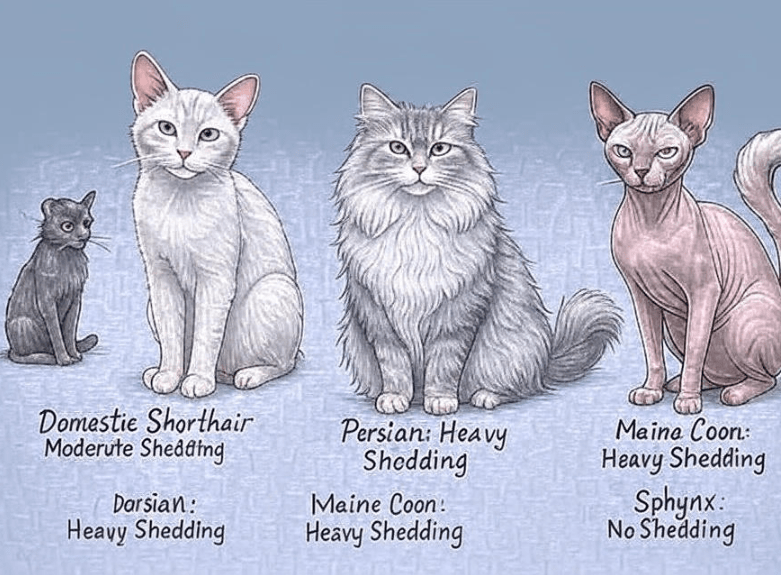
Domestic Shorthair cats have a normal shedding level that is less than long-haired breeds but more than no shedding at all. Shedding activity in Domestic Shorthair cats depends heavily on their health condition plus what they eat plus their surroundings plus changes in weather.
Factors Influencing Shedding in Domestic Shorthair Cats
Many aspects determine how much hair a Domestic Shorthair cat sheds. We need to study each shedding factor to see how it affects Domestic Shorthair cats and how to handle it correctly.
1.Seasonal Changes and Temperature Fluctuations
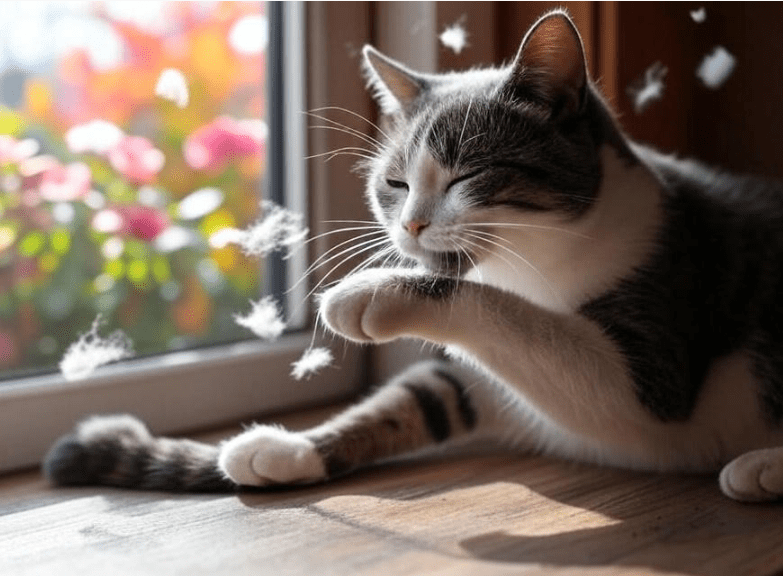
Domestic Shorthair cats just like other felines react to yearly weather patterns. During the spring and fall, many cats go through a process known as “seasonal shedding.” To adapt to warmer and cooler seasons they naturally lose their winter coat in spring and grow back the winter fur during autumn. The normal shedding period of your cat shows up most clearly around seasonal changes.
2.Diet and Nutrition
A balanced diet of healthy food helps your cat maintain ideal skin and fur health at every season. A Domestic Shorthair that lacks proper nutrition will develop weak and dry fur that sheds more frequently. Omega-3 and omega-6 fatty acids from diet protect your cat’s skin and coat which helps reduce shedding when your pet experiences dryness or other health problems.
3.Health Conditions
Medical problems contribute to higher levels of hair loss. When cats have allergies, hormonal problems or skin infections their body sheds extra fur. When fleas attack your cat it will scratch and bit its skin which leads to extra hair loss. Taking your cat to the veterinarian becomes essential when regular shedding patterns change and you want to know about possible medical reasons behind increased shedding.
4.Stress and Anxiety
When cats get stressed their health declines which shows through their coat. When cats feel stressed or anxious from boredom they respond by shedding unusually large amounts of fur. Moving to a new home or bringing new pets into the household creates tension that leads to increased shedding by your cat. A stable home environment lets your cat feel relaxed which reduces their shedding problem.
5.Age and Genetics
Cats shed more when they are aged or born with a natural shedding ability. Each Domestic Shorthair cat line shows varying levels of hair shedding.
General Shedding Behavior and How Much They Shed on Average
Domestic Shorthair cats produce a predictable amount of hair each day. Their fur shedding stays at a reasonable level yet picks up during spring and fall when they normally react to temperature shifts. At these times their bodies naturally shift from one coat to another which makes them drop more fur. Natural seasonal changes trigger their body to shed fur as part of their adjustment to weather variations.
Domestic Shorthair cats shed less than cats with long hair like Persian and Maine Coon. Most Domestic Shorthair owners see minor fur buildup throughout their household with normal shedding patterns. How much cats shed depends on their health status, eating habits and living settings. You may not notice much fur shedding at all since short-haired cats shed at a lesser rate than cats with longer fur.
Regular grooming and proper care keep cat shedding under control even when health problems or poor nutrition put extra stress on the hair. Visit your veterinarian for guidance if you see heavy cat shedding symptoms beyond normal limits.
How Much Shedding is Normal for Domestic Shorthair Cats?
The level of shedding a Domestic Shorthair cat produces depends on different cats. Short Haired cats lose fewer hairs compared to their long-haired counterparts. Here’s what you can expect:
Moderate Shedding: During spring and fall shedding seasons a Domestic Shorthair usually sheds its fur mildly. The cat usually drops small hair clumps across the home but shedding remains limited.
Year-round Shedding: Domestic Shorthairs shed their hair slowly without creating any obvious changes in their coat even though they do it at all times of the year.
When your cat loses hair all year without stopping it indicates possible health or environmental issues with their diet or surroundings.
How to Manage and Reduce Shedding in Domestic Shorthair Cats
To control shedding in Domestic Shorthair cats use different methods to manage and lower the issue. Here are some actionable solutions:
1.Regular Grooming
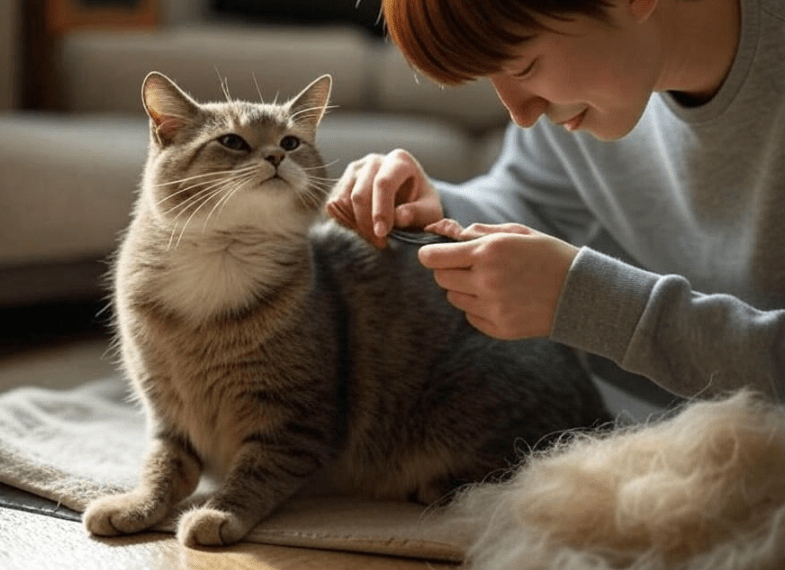
To manage cat hair loss effectively you should brush your pet regularly. Through routine brushing once or twice weekly Domestic Shorthair cats shed their loose fur before it lands on surfaces. The tool efficiently removes hairballs while succeeding in maintaining your cat’s healthy coated appearance. An extra-fine comb helps you take away dead hairs from your cat’s coat. Increase your cat grooming sessions when shedding grows heavier in specific seasons.
2.Bathing Your Cat
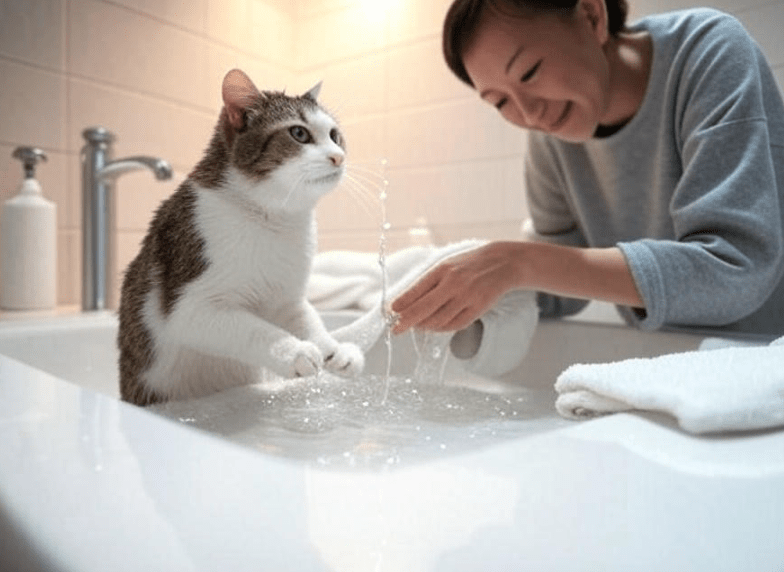
While cats naturally groom themselves, shedding decreases more when you bathe your cat especially when its hair feels oily or tangled. Regular bathing helps to reduce loose hair but must be limited because constant bathing will take away the natural oils that protect your cat’s skin.
3.Dietary Adjustments
Your Domestic Shorthair needs specific fatty acids in their meals to manage their coat condition. Foods with omega-3 and omega-6 fatty acids support good skin health and proper coat condition in pet animals. The regular application of fish oil and coconut oil to your cat’s skin helps reduce hair shedding because the supplements keep the skin properly hydrated and enhance coat shine.
4.Environmental Control
Shedding problems from stress can be reduced when you make your cat’s living space stable and relaxed. Keep regular caregiving habits and let your cat enjoy leisurely activities to stay relaxed and occupied. This can reduce stress-related shedding.
5.Use of Air Purifiers and Cleaning Tools
An air purifier equipped with a HEPA filter captures more cat dander and hair from the air which can benefit people with allergies in their home. Regular vacuuming plus lint roller use and furniture cover purchase help reduce the amount of cat hair that needs cleaning.
Tips for Cat Owners with Allergies
Control your domestic shorthair cat to stop its shedding when you have allergies. You should follow your doctor’s directions to take prescribed antihistamines or allergy pills to manage shedding. Putting your cat in limited areas like your bedroom while choosing bedding with allergy fighting materials helps limit shedding impact.
Conclusion
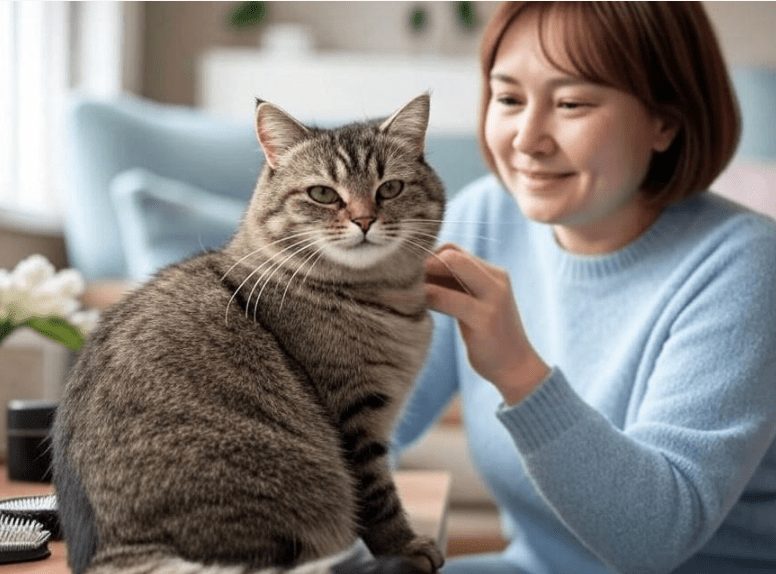
How much shed does the Domestic Shorthair cat produce? Short Haired Domestic Cats shed less hair when compared to their long-haired counterparts. Taking proper care helps you manage their shedding habit effectively. You can control your cat’s hair loss and home cleanliness through daily care routines plus correct nutrition and environmental planning. See your vet to find the cause when your cat sheds exceptionally or differently from normal patterns.
You can better handle your Domestic Shorthair cat’s shedding while keeping the pleasure of owning such a pet.

